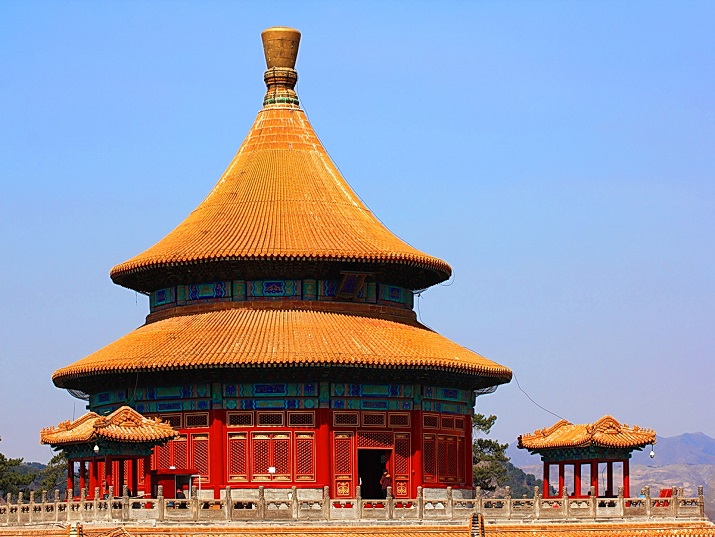The Pule Temple is located at the northeast of Chengde Summer Resort in Hebei Province, occupying 2.4 hectares. The temple features a combination of Chinese-style and Tibetan-style structures. The Pule Temple can be divided into two parts. The front area consists of Chinese-style structures while the rear one is mostly Tibetan-style Mandala.

The Pule Temple is constructed in the form of a Tibetan mandala built upon three square platforms. The mandala design was likely chosen for several reasons. First, it was both an architecturally and a spiritually symbol for the Mongol tribes who visit the Pule Temple to commemorate. Secondly, it was a sensible design for marking a point along the axis defined by Jinshan Temple and Qingchui Peak, since the entire world was often depicted as a mandala form with its central axis around Mount Sumeru. In this case, the Pule Temple created a third and central axis mundi at Chengde and reoriented the entire landscape around it. Qingchui Peak, Jinshan Temple and the other outer temples then became satellites in Pule Temple's orbit.
The Manchu ancestors of Emperor Qianlong had long aspired for a prominent position in the Buddhist pantheon, with the first leader of the Manchus, Nurhachi, declaring him to be an incarnation of the Bodhisattva Manjusri (from which the word Manchu may have been derived). Qianlong continued this tradition by publically declaring him to be a reincarnation of Manjusri. This enabled him to exert the spiritual authority necessary to depict himself as a dragon overarching the Buddhist world, while allowing him the temporal authority to claim suzerainty over the Tibetan Buddhists tribes at the western limits of his empire-- the very subjects Pule Temple was intended to placate.
